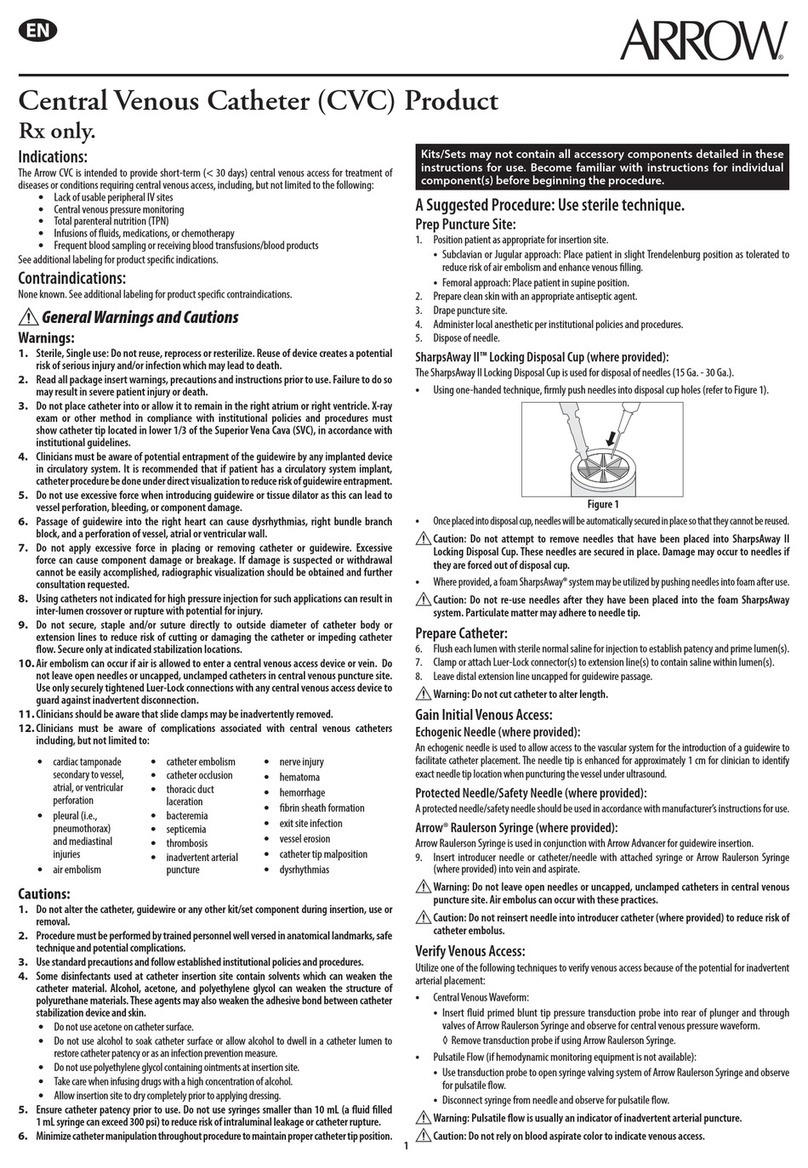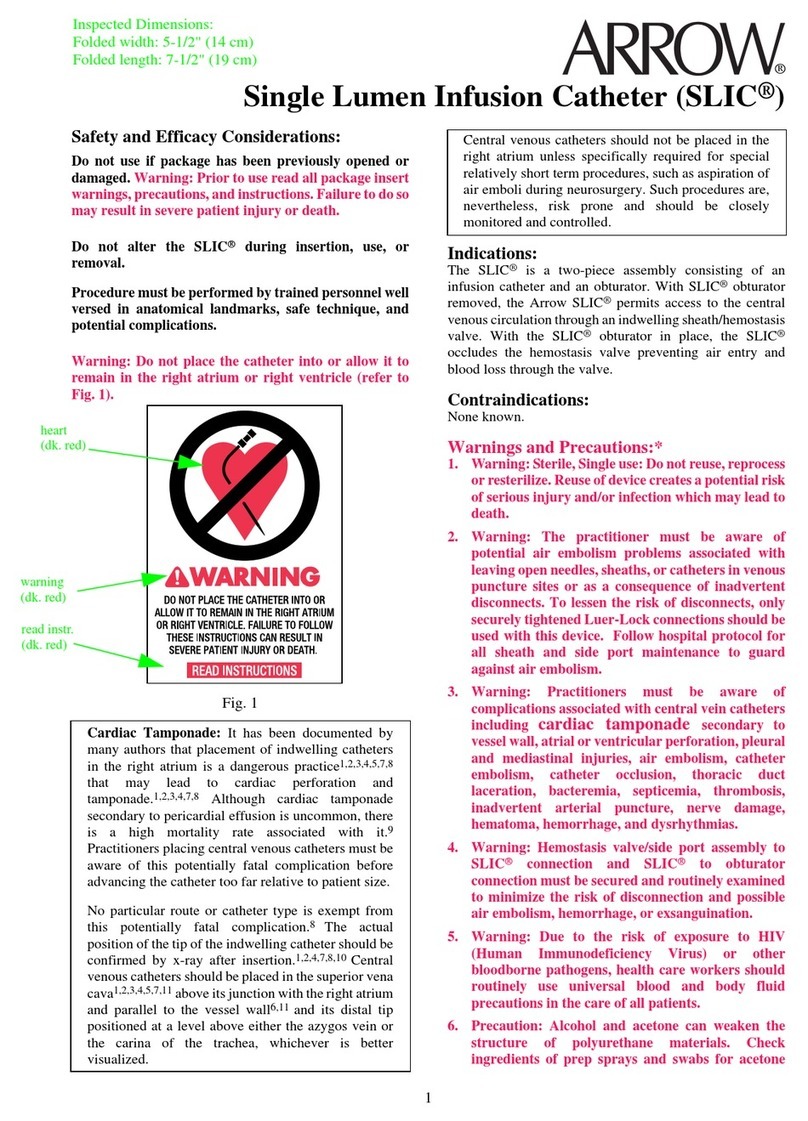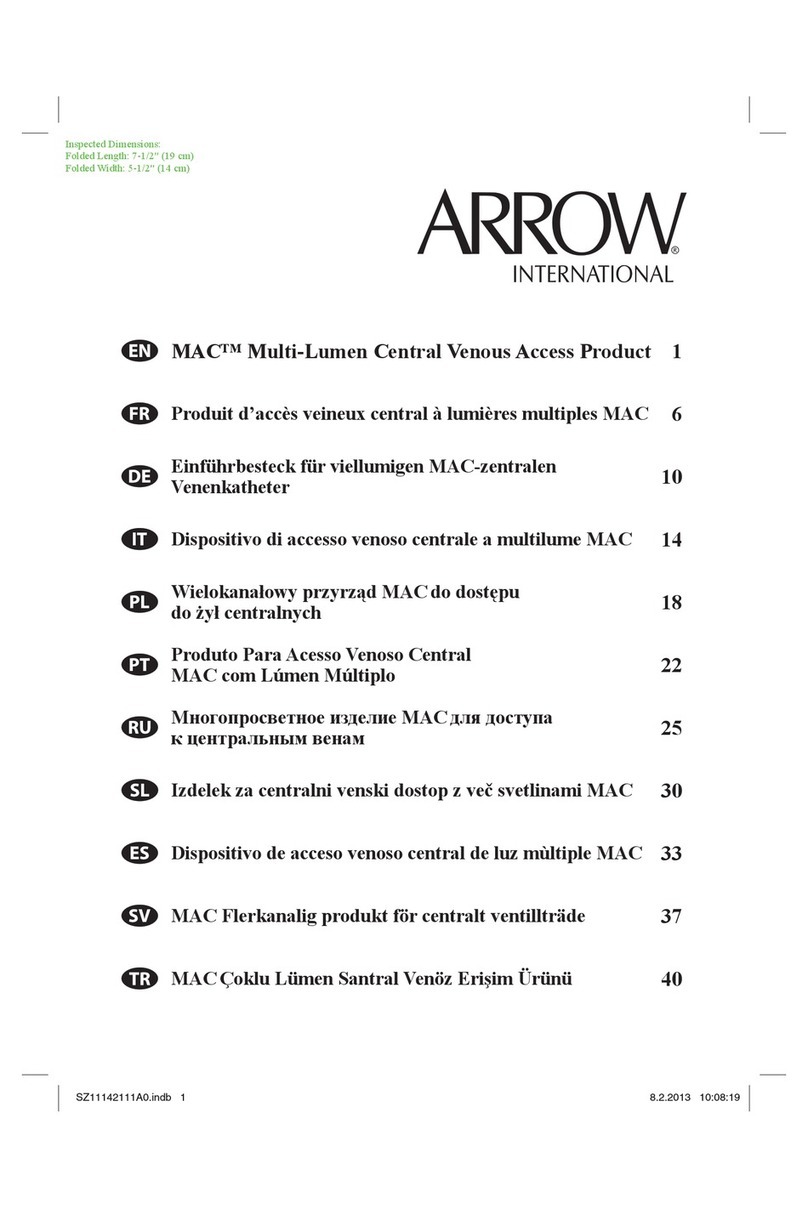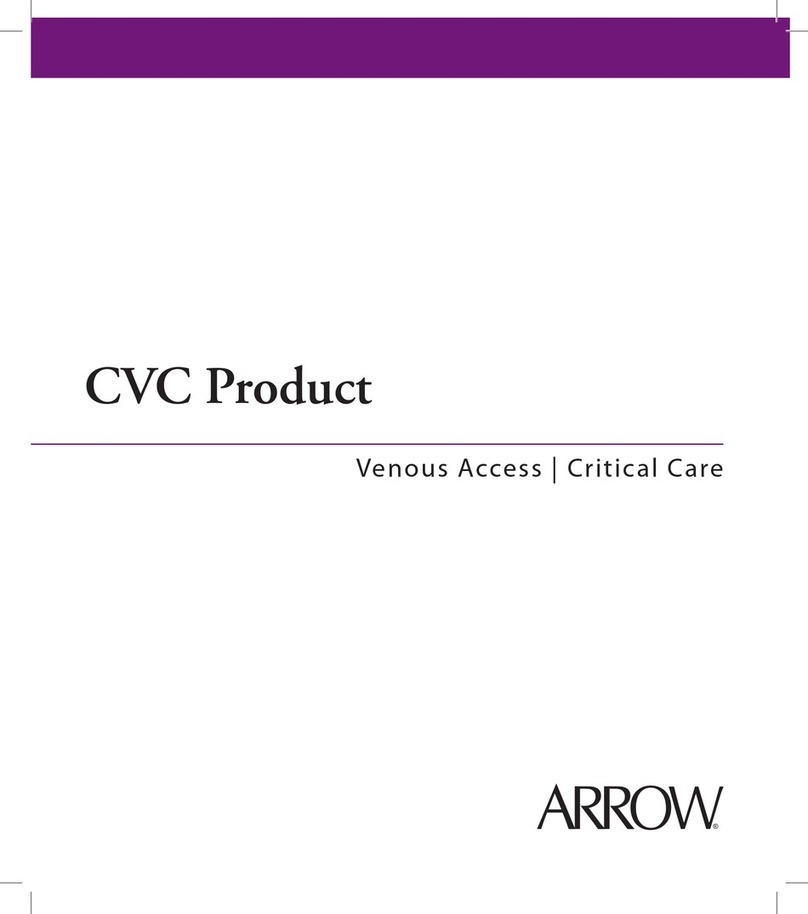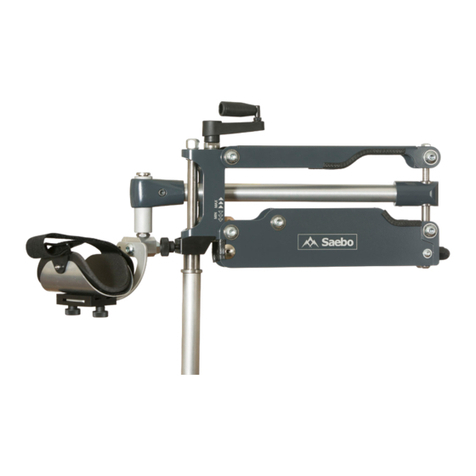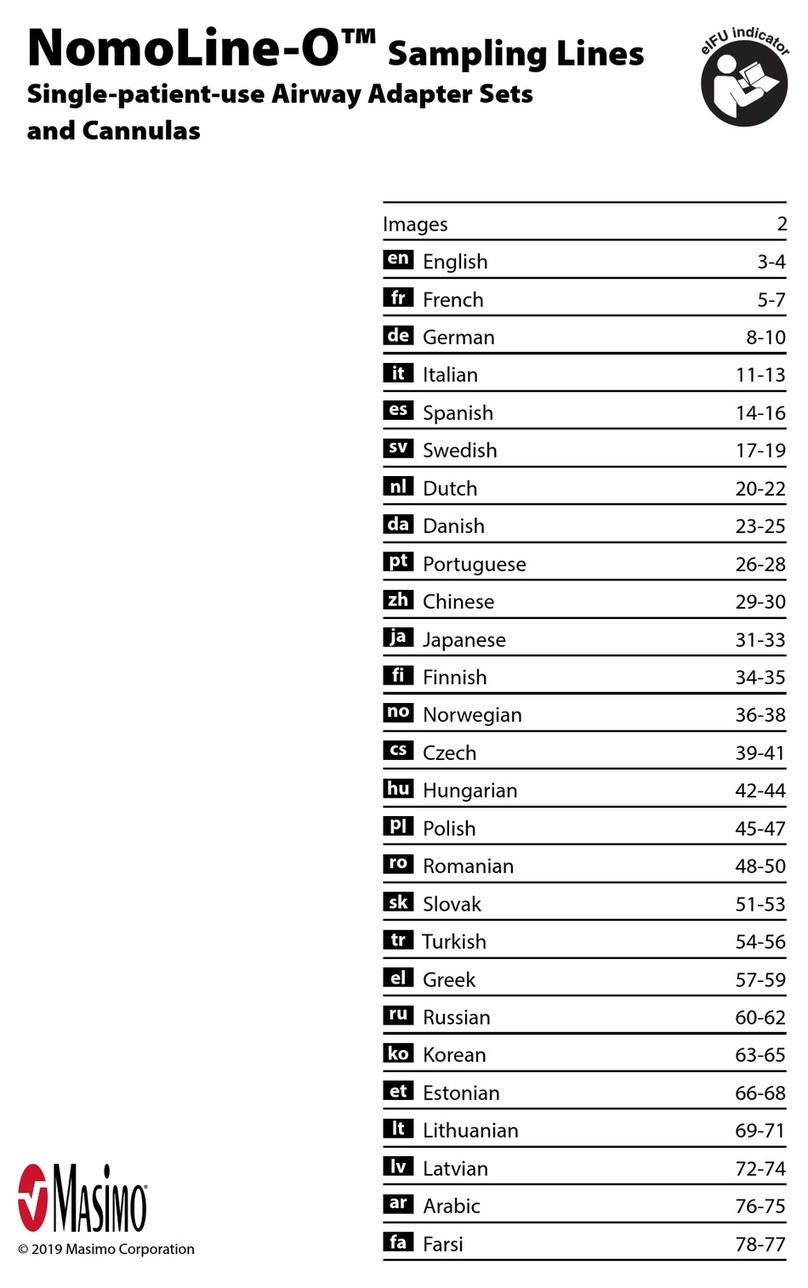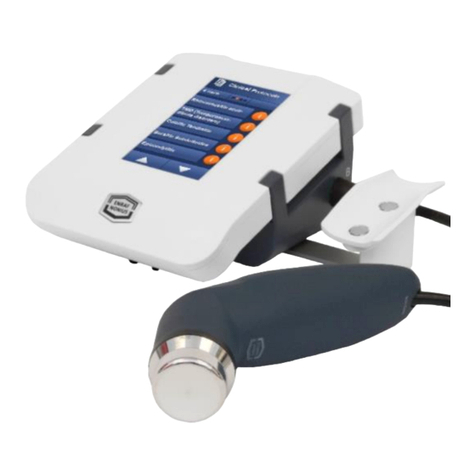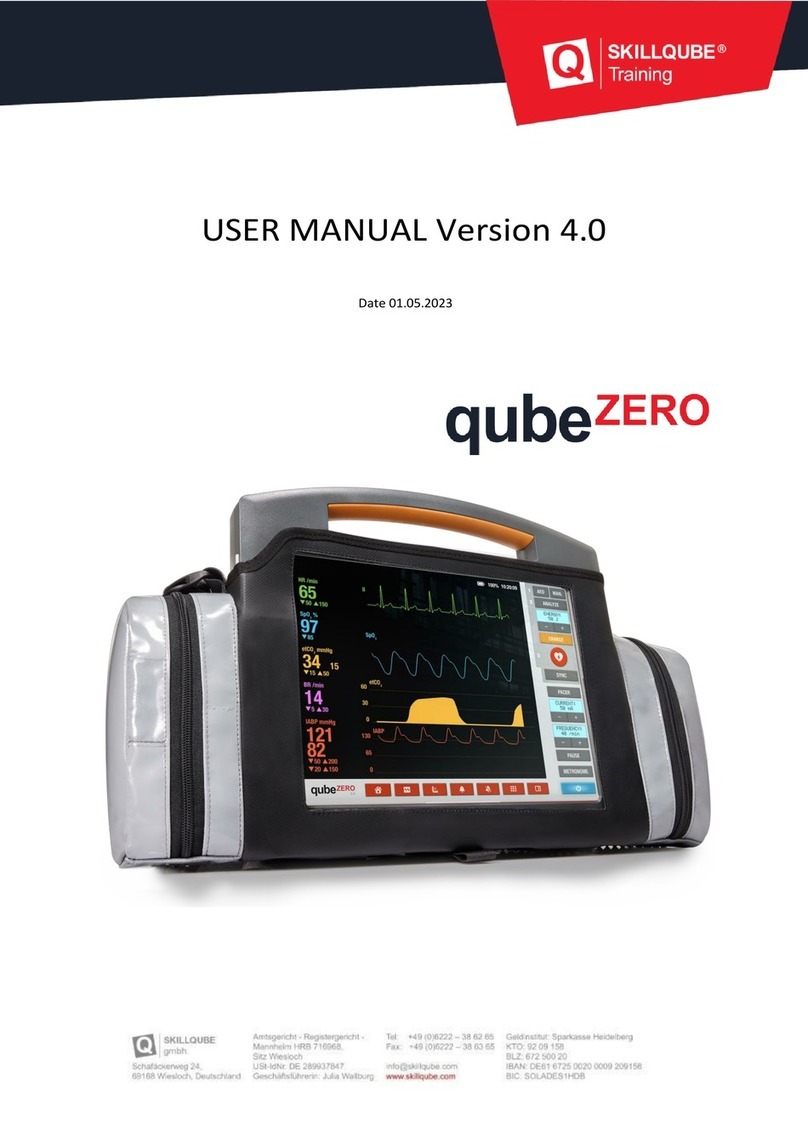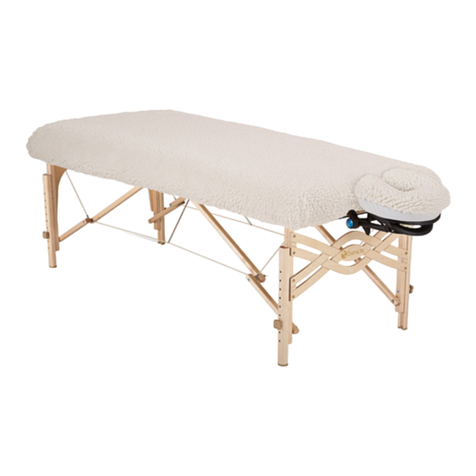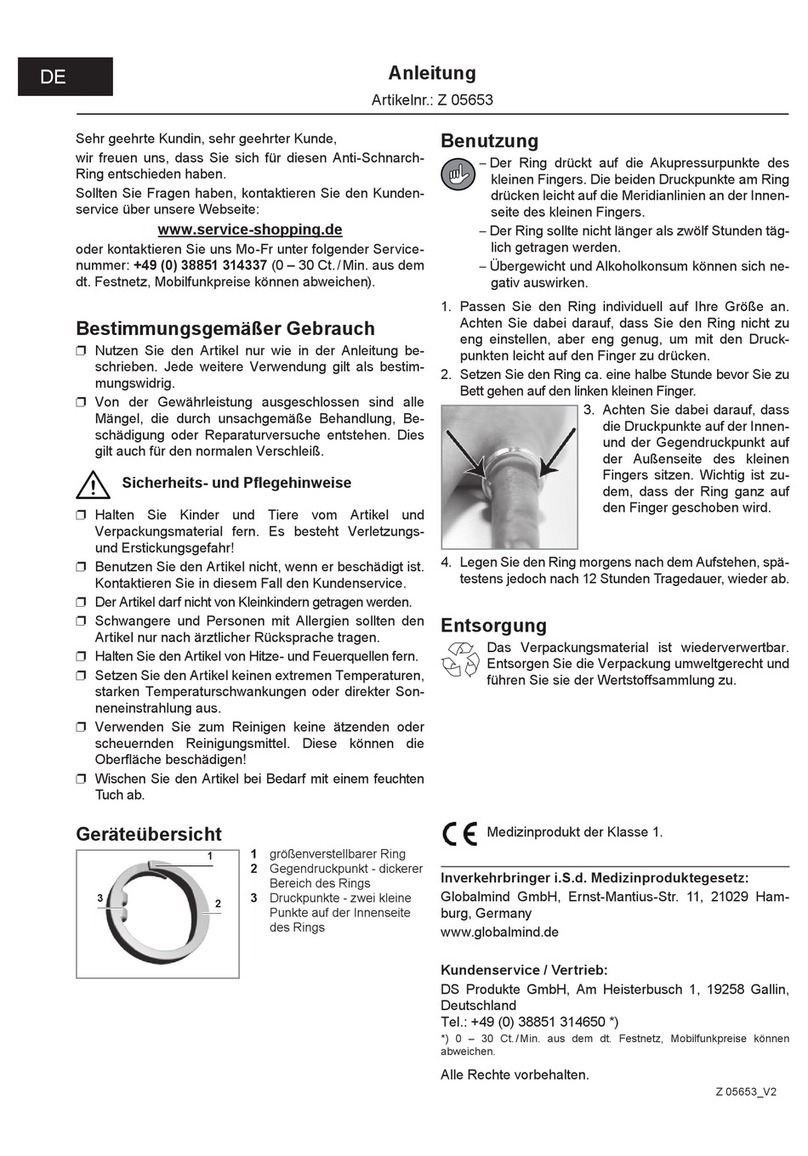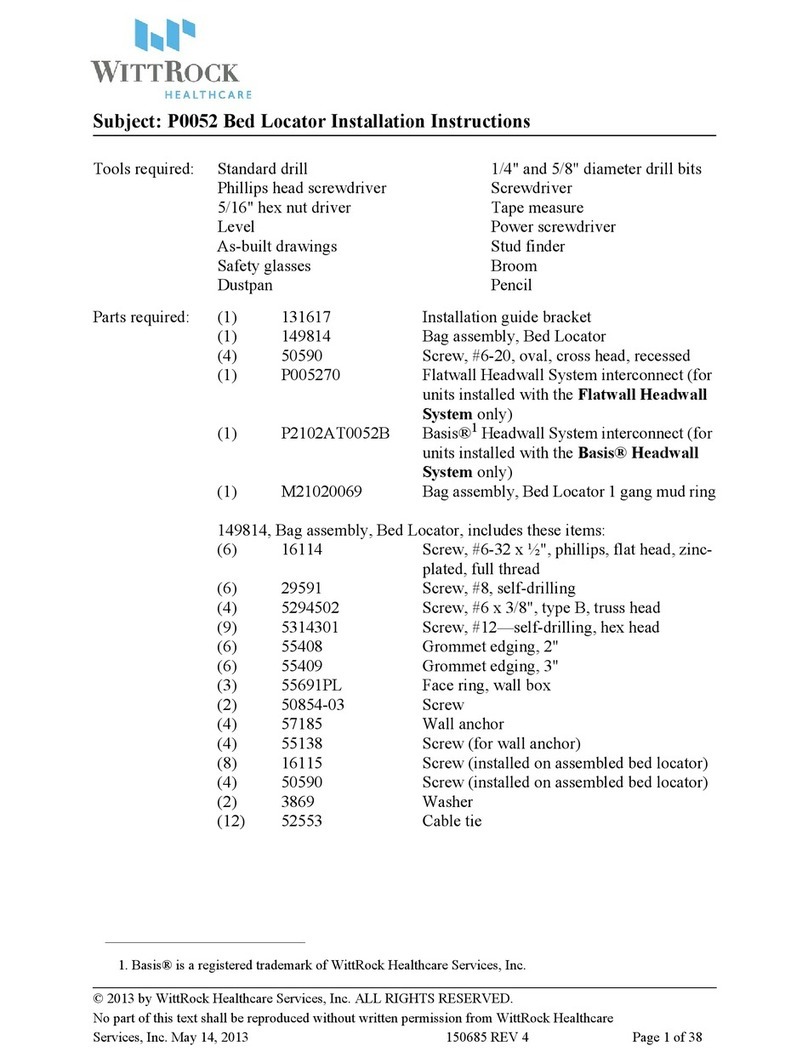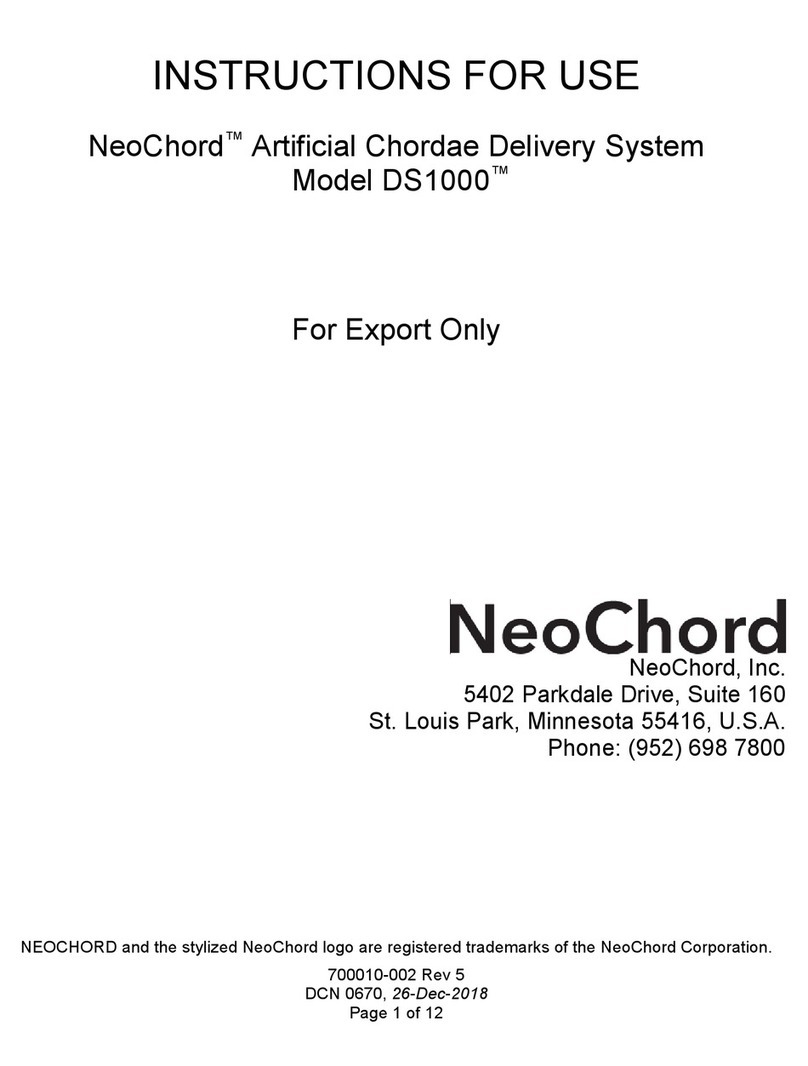Arrow AutoCAT 2 Series User manual

Part Number: IAM-9007, Rev 0
Arrow AutoCAT®2 Series
Intra-Aortic Balloon Pump (IABP) System
Operating Manual
Arrow International
9 Plymouth Street
Everett, Massachusetts 02149
(617) 389-6400 • (800) 343-3297
(617) 387-2157 FAX
24 hr. Intra-Aortic Balloon Product Hotline
(800) 447-IABP (4227) US/Canada • (617) 389-8628 Worldwide
Caution: Federal Law (U.S.A.) restricts the sale, distribution or use of this
device to, by or on the lawful order of a health professional.

Copyright
Copyright © 2006 Arrow International, Everett, MA 02149 USA
Document Specification
When making reference to or requesting additional copies of this document, please note
the following Part Number: IAM-9007, Rev 0.

i
Table of Contents
CHAPTER 1: Clinical Uses 1-1
1.1: Clinical Uses of IABP . . . . . . . . . . . . . . . . . . . . . . . . . . . . . . . . . .1-3
Physiological Basis of IABP . . . . . . . . . . . . . . . . . . . . . . . . . . . . . . . . . . . . . . . . .1-3
Medical Indications . . . . . . . . . . . . . . . . . . . . . . . . . . . . . . . . . . . . . . . . . . . . . .1-4
Mechanical Defects . . . . . . . . . . . . . . . . . . . . . . . . . . . . . . . . . . . . . . . . . . . . . . .1-7
Surgical Indications . . . . . . . . . . . . . . . . . . . . . . . . . . . . . . . . . . . . . . . . . . . . . .1-9
1.2: Contraindications and Potential Complications of IABP . . . . . . . . . . .1-11
Contraindications . . . . . . . . . . . . . . . . . . . . . . . . . . . . . . . . . . . . . . . . . . . . . . .1-11
Potential Complications . . . . . . . . . . . . . . . . . . . . . . . . . . . . . . . . . . . . . . . . . .1-12
CHAPTER 2: Installation Procedures 2-1
2.1: Installation Procedures . . . . . . . . . . . . . . . . . . . . . . . . . . . . . . . . .2-3
Pre-installation Requirements . . . . . . . . . . . . . . . . . . . . . . . . . . . . . . . . . . . . . . .2-3
Service Installation . . . . . . . . . . . . . . . . . . . . . . . . . . . . . . . . . . . . . . . . . . . . . . .2-4
AC Power . . . . . . . . . . . . . . . . . . . . . . . . . . . . . . . . . . . . . . . . . . . . . . . . . . . . .2-5
Circuit Breaker . . . . . .. . . . . . . . . . . . . . . . . . . . . . . . . . . . . . . . . . . . . . . . . . . .2-5
Time Meter . . . . . . . . . . . . . . . . . . . . . . . . . . . . . . . . . . . . . . . . . . . . . . . . . . . .2-5
CHAPTER 3: Principles of Operation 3-1
3.1: Overview of the AutoCAT®2 Series . . . . . . . . . . . . . . . . . . . . . . . . .3-3
Introduction . . . . . . . . . . . . . . . . . . . . . . . . . . . . . . . . . . . . . . . . . . . . . . . . . . .3-3
Overview of AutoCAT®2 Series . . . . . . . . . . . . . . . . . . . . . . . . . . . . . . . . . . . . . .3-3
Function of AutoCAT®2 Series . . . .. . . . . . . . . . . . . . . . . . . . . . . . . . . . . . . . . . . 3-3
AutoCAT®2 Series Control Module . . . . . . . . . . . . . . . . . . . . . . . . . . . . . . . . . . . .3-6
AutoCAT®2 Series Display and Function Keys . . . . . . . . . . . . . . . . . . . . . . . . . . . 3-7
Patient Connections . . . . . . . . . . . . . . . . . . . . . . . . . . . . . . . . . . . . . . . . . . . . .3-10
Storage Compartment . . . . . . . . . . . . . . . . . . . . . . . . . . . . . . . . . . . . . . . . . . . .3-11
AutoCAT®2 Series Pak . . . . . . . . . . . . . . . . . . . . . . . . . . . . . . . . . . . . . . . . . . .3-11
Pneumatic Drive Module . . . . . . . . . . . . . . . . . . . . . . . . . . . . . . . . . . . . . . . . . .3-12
System Battery . . . . . . . . . . . . . . . . . . . . . . . . . . . . . . . . . . . . . . . . . . . . . . . . .3-12
Strip Chart Recorder . . . . . . . . . . . . . . . . . . . . . . . . . . . . . . . . . . . . . . . . . . . .3-13
3.2: Input and Output Connections . . . . . . . . . . . . . . . . . . . . . . . . . . .3-14
Input/Output Connections . . . . . . . . . . . . . . . . . . . . . . . . . . . . . . . . . . . . . . . . .3-14
Input Connections . . . . . . . . . . . . . . . . . . . . . . . . . . . . . . . . . . . . . . . . . . . . . .3-15
Data/Output Connections . . . . . . . . . . . . . . . . . . . . . . . . . . . . . . . . . . . . . . . . .3-17
Balloon Connection . . . . . . . . . . . . . . . . . . . . . . . . . . . . . . . . . . . . . . . . . . . . . .3-17

ii
Table of Contents
3.3: Control Keys and Function Keys . . . . . . . . . . . . . . . . . . . . . . . . . . 3-18
Function Control Keys . . . . . . . . . . . . . . . . . . . . . . . . . . . . . . . . . . . . . . . . . . .3-18
AutoPilot™/Operator Control Keys . . . . . . . . . . . . . . . . . . . . . . . . . . . . . . . . . . .3-19
AutoPilot™Automatic Timing Selection . . . . . . . . . . . . . . . . . . . . . . . . . . . . . . . 3-20
Inflate/Deflate Control Keys . . . . . . . . . . . . . . . . . . . . . . . . . . . . . . . . . . . . . . .3-21
Trigger Control Keys . . . . . . . . . . . . . . . . . . . . . . . . . . . . . . . . . . . . . . . . . . . . .3-22
Trigger Selection In AutoPilot™Mode . . . . . . . . . . . . . . . . . . . . . . . . . . . . . . . . .3-23
Arrhythmia Timing Key . . . . . . . . . . . . . . . . . . . . . . . . . . . . . . . . . . . . . . . . . . 3-25
Pump Status . . . . . . . . . . . . . . . . . . . . . . . . . . . . . . . . . . . . . . . . . . . . . . . . . . .3-27
Signal Input Selection . . . . . . . . . . . . . . . . . . . . . . . . . . . . . . . . . . . . . . . . . . . .3-28
ECG SELECT . . . . . . . . . . . . . . . . . . . . . . . . . . . . . . . . . . . . . . . . . . . . . . . . .3-28
ECG Gain Control . . . . . . . . . . . . . . . . . . . . . . . . . . . . . . . . . . . . . . . . . . . . . .3-30
AP Signal Source Select . . . . . . . . . . . . . . . . . . . . . . . . . . . . . . . . . . . . . . . . . . .3-31
AP Autoscaling . . . . . . . . . . . . . . . . . . . . . . . . . . . . . . . . . . . . . . . . . . . . . . . . .3-32
AP Zero and Calibration
AP Alarm
Assist Ratio . . . . . . . . . . . . . . . . . . . . . . . . . . . . . . . . . . . . . . . . . . . . . . . . . . .3-36
Balloon Volume . . . . . . . . . . . . . . . . . . . . . . . . . . . . . . . . . . . . . . . . . . . . . . . .3-37
Recorder Control Keys . . . . . . . . . . . . . . . . . . . . . . . . . . . . . . . . . . . . . . . . . . .3-39
Alarm Control Keys . . . . . . . . . . . . . . . . . . . . . . . . . . . . . . . . . . . . . . . . . . . . .3-40
Alarm System . . . . . . . . . . . . . . . . . . . . . . . . . . . . . . . . . . . . . . . . . . . . . . . . . .3-41
Multiple Alarm Handling . . . . . . . . . . . . . . . . . . . . . . . . . . . . . . . . . . . . . . . . . .3-42
Alarm Messages . . . . . . . . . . . . . . . . . . . . . . . . . . . . . . . . . . . . . . . . . . . . . . . .3-43
Cursor . . . . . . . . . . . . . . . . . . . . . . . . . . . . . . . . . . . . . . . . . . . . . . . . . . . . . . .3-48
Help . . . . . . . . . . . . . . . . . . . . . . . . . . . . . . . . . . . . . . . . . . . . . . . . . . . . . . . .3-49
Help Messages
Display Control . . . . . . . . . . . . . . . . . . . . . . . . . . . . . . . . . . . . . . . . . . . . . . . .3-50
Home . . . . . . . . . . . . . . . . . . . . . . . . . . . . . . . . . . . . . . . . . . . . . . . . . . . . . . . .3-51
Multi-Function Keys
Recorder Setup . . . . . . . . . . . . . . . . . . . . . . . . . . . . . . . . . . . . . . . . . . . . . . . .3-52
Weaning Setup . . . . . . . . . . . . . . . . . . . . . . . . . . . . . . . . . . . . . . . . . . . . . . . . .3-53
Show/Hide Stats . . . . . . . . . . . . . . . . . . . . . . . . . . . . . . . . . . . . . . . . . . . . . . . .3-55
Audio Setup . . . . . . . . . . . . . . . . . . . . . . . . . . . . . . . . . . . . . . . . . . . . . . . . . . .3-56
Hemodynamic Calculations (Hemo Calcs) . . . . . . . . . . . . . . . . . . . . . . . . . . . . . .3-57
Clock Setup . . . . . . . . . . . . . . . . . . . . . . . . . . . . . . . . . . . . . . . . . . . . . . . . . . .3-58

iii
Table of Contents
CHAPTER 4: Principles and Application of Counterpulsation Timing, Triggering,
Assist Ratio and Balloon Volume
4.1: Assist Ratio . . . . . . . . . . . . . . . . . . . . . . . . . . . . . . . . . . . . . . . .4-2
4.2: Balloon Volume . . . . . . . . . . . . . . . . . . . . . . . . . . . . . . . . . . . . . .4-3
4.3: Triggering . . . . . . . . . . . . . . . . . . . . . . . . . . . . . . . . . . . . . . . . .4-4
4.3.1: Trigger Selection in AutoPilot™Mode
4.3.2: Trigger Selection in Operator Mode
4.4: Timing . . . . . . . . . . . . . . . . . . . . . . . . . . . . . . . . . . . . . . . . . . . 4-8
Conventional Timing
Real Time Timing
Timing During Arrhythmia’s in AutoPilot™mode
Setting Timing in Operator Mode
Timing Errors
Timing Assessment
Trigger Mode Inflation/Deflation Ranges in Operator mode
CHAPTER 5: Operating Procedures: AutoPilot™Mode
5.1: Operating Instructions . . . . . . . . . . . . . . . . . . . . . . . . . . . . . . . . . 5-2
Summary of Start-Up Instructions for AutoPilot™Mode . . . . . . . . . . . . . . . . . . . . 5-3
Preparation . . . . . . . . . . . . . . . . . . . . . . . . . . . . . . . . . . . . . . . . . . . . . . . . . . . .5-5
Selecting the Operations Mode . . . . . . . . . . . . . . . . . . . . . . . . . . . . . . . . . . . . . . .5-6
ECG Connections . . . . . . . . . . . . . . . . . . . . . . . . . . . . . . . . . . . . . . . . . . . . . . . .5-6
Arterial Pressure Connections . . . . . . . . . . . . . . . . . . . . . . . . . . . . . . . . . . . . . .5-10
Connecting IAB . . . . . . . . . . . . . . . . . . . . . . . . . . . . . . . . . . . . . . . . . . . . . . . .5-11
Verify the Trigger Mode . . . . . . . . . . . . . . . . . . . . . . . . . . . . . . . . . . . . . . . . . . 5-11
Initiating Counterpulsation . . . . . . . . . . . . . . . . . . . . . . . . . . . . . . . . . . . . . . . .5-12
Assessing Inflation/Deflation Timing . . . . . . . . . . . . . . . . . . . . . . . . . . . . . . . . . .5-12
Assessing the Balloon Pressure Waveform . . . . . . . . . . . . . . . . . . . . . . . . . . . . . .5-12
Verify Alarms ON . . . . . . . . . . . . . . . . . . . . . . . . . . . . . . . . . . . . . . . . . . . . . . .5-14
Maintaining Balloon Pumping . . . . . . . . . . . . . . . . . . . . . . . . . . . . . . . . . . . . . .5-15
Freezing and Recording Waveforms . . . . . . . . . . . . . . . . . . . . . . . . . . . . . . . . . .5-16
Battery Operation . . . . . . . . . . . . . . . . . . . . . . . . . . . . . . . . . . . . . . . . . . . . . . .5-17

iv
Table of Contents
5.2: Clinical Environments . . . . . . . . . . . . . . . . . . . . . . . . . . . . . . . . . 5-18
The AutoCAT®2 Series in the Intensive Care Unit . . . . . . . . . . . . . . . . . . . . . . . .5-18
The AutoCAT®2 Series in the Operating Room or
Catheterization Lab . . . . . . . . . . . . . . . . . . . . . . . . . . . . . . . . . . . . . . . . . . . . .5-18
The AutoCAT®2 Series in Emergency Conditions . . . . . . . . . . . . . . . . . . . . . . . . .5-20
AutoCAT®2 Series Transport . . . . . . . . . . . . . . . . . . . . . . . . . . . . . . . . . . . . . . .5-21
AeroAutoCat Series Additions
Weaning the Patient . . . . . . . . . . . . . . . . . . . . . . . . . . . . . . . . . . . . . . . . . . . . .5-25
CHAPTER 6: Operating Procedures: Operator Mode 6-1
6.1: Operating Instructions . . . . . . . . . . . . . . . . . . . . . . . . . . . . . . . . . 6-2
Summary of Start-Up Instructions for Operator Mode . . . . . . . . . . . . . . . . . . . . . 6–3
Preparation . . . . . . . . . . . . . . . . . . . . . . . . . . . . . . . . . . . . . . . . . . . . . . . . . . . .6-5
Selecting the Operations Mode . . . . . . . . . . . . . . . . . . . . . . . . . . . . . . . . . . . . . . .6-6
ECG Connections . . . . . . . . . . . . . . . . . . . . . . . . . . . . . . . . . . . . . . . . . . . . . . . .6-6
Arterial Pressure Connections . . . . . . . . . . . . . . . . . . . . . . . . . . . . . . . . . . . . . . .6-9
Connecting IAB . . . . . . . . . . . . . . . . . . . . . . . . . . . . . . . . . . . . . . . . . . . . . . . .6-11
Choosing A Trigger Mode . . . . . . . . . . . . . . . . . . . . . . . . . . . . . . . . . . . . . . . . . 6-11
Verify Reliable Triggering
Initiating Counterpulsation . . . . . . . . . . . . . . . . . . . . . . . . . . . . . . . . . . . . . . . . 6-13
Optimizing Inflation/Deflation Timing . . . . . . . . . . . . . . . . . . . . . . . . . . . . . . . .6-14
Assessing the Balloon Pressure Waveform . . . . . . . . . . . . . . . . . . . . . . . . . . . . . .6-15
Verify Alarms ON . . . . . . . . . . . . . . . . . . . . . . . . . . . . . . . . . . . . . . . . . . . . . . .6-16
Maintaining Balloon Pumping . . . . . . . . . . . . . . . . . . . . . . . . . . . . . . . . . . . . . .6-18
Freezing and Recording Waveforms . . . . . . . . . . . . . . . . . . . . . . . . . . . . . . . . . 6-19
Battery Operation . . . . . . . . . . . . . . . . . . . . . . . . . . . . . . . . . . . . . . . . . . . . . . .6-20
6.2: Clinical Environments . . . . . . . . . . . . . . . . . . . . . . . . . . . . . . . . . 6-20
The AutoCAT®2 Series in the Intensive Care Unit . . . . . . . . . . . . . . . . . . . . . . . . 6-20
The AutoCAT®2 Series in the Operating Room or
Catheterization Lab . . . . . . . . . . . . . . . . . . . . . . . . . . . . . . . . . . . . . . . . . . . . .6-21
The AutoCAT®2 Series in Emergency Conditions . . . . . . . . . . . . . . . . . . . . . . . . 6-22
AutoCAT®2 Series Transport . . . . . . . . . . . . . . . . . . . . . . . . . . . . . . . . . . . . . . .6-22
AeroAutoCat Series Additions
Weaning the Patient . . . . . . . . . . . . . . . . . . . . . . . . . . . . . . . . . . . . . . . . . . . . . 6-22

v
Table of Contents
CHAPTER 7: Calibration Procedures 7-1
7.1: Calibration of Transducers . . . . . . . . . . . . . . . . . . . . . . . . . . . . . . 7-2
FiberOptix™Sensor Zeroing . . . . . . . . . . . . . . . . . . . . . . . . . . . . . . . . . . . . . . . . .7-2
Transducer Zeroing and Calibration . . . . . . . . . . . . . . . . . . . . . . . . . . . . . . . . . .7-6
Zeroing a High Level Monitor Connection . . . . . . . . . . . . . . . . . . . . . . . . . . . . . . .7-8
Changing the Display Range . . . . . . . . . . . . . . . . . . . . . . . . . . . . . . . . . . . . . . . .7-9
CHAPTER 8: Troubleshooting 8-1
8.1: Common Operational Problems . . . . . . . . . . . . . . . . . . . . . . . . . . . 8-1
Common Operational Problems in AutoPilot™. . . . . . . . . . . . . . . . . . . . . . . . . . . .8-5
FiberOptix™Sensor Troubleshooting . . . . . . . . . . . . . . . . . . . . . . . . . . . . . . . . . .8-6
Troubleshooting ESIS . . . . . . . . . . . . . . . . . . . . . . . . . . . . . . . . . . . . . . . . . . . .8-11
8.2: Diagnostic Alarms . . . . . . . . . . . . . . . . . . . . . . . . . . . . . . . . . . . 8-13
Automatic Response Alarms . . . . . . . . . . . . . . . . . . . . . . . . . . . . . . . . . . . . . . . 8-13
Class I
Class 2
Information Only Alarms . . . . . . . . . . . . . . . . . . . . . . . . . . . . . . . . . . . . . . . . .8-20
Class 3
Class 4
8.3: Balloon Pressure Waveform. . . . . . . . . . . . . . . . . . . . . . . . . . . . . 8-24
Squared Waveform . . . . . . . . . . . . . . . . . . . . . . . . . . . . . . . . . . . . . . . . . . . . . .8-24
Reduced Augmentation . . . . . . . . . . . . . . . . . . . . . . . . . . . . . . . . . . . . . . . . . ..8-25
Baseline Below Zero . . . . . . . . . . . . . . . . . . . . . . . . . . . . . . . . . . . . . . . . . . . . . 8-26
8.4: Leak Testing and Tubing Repairs . . . . . . . . . . . . . . . . . . . . . . . . . 8-27
CHAPTER 9: Operational Precautions, Limitations and Hazards 9-1
9.1: Warnings for the AutoCAT®2 Series . . . . . . . . . . . . . . . . . . . . . . . . 9-1
9.2: Cautions for the AutoCAT®2 Series . . . . . . . . . . . . . . . . . . . . . . . . . 9-6
9.3: Hazards Associated with the AutoCAT®2 Series . . . . . . . . . . . . . . . . 9-10
9.4: System Malfunction and Pump Shutdown . . . . . . . . . . . . . . . . . . . . 9-11

vi
Table of Contents
CHAPTER 10: Maintenance and Service 10-1
Routine Maintenance Procedures. . . . . . . . . . . . . . . . . . . . . . . . . . . . . 10-1
AutoCAT®2 Series System Maintenance Schedule . . . . . . . . . . . . . . . . . . . . . . . . 10-2
10.1: User Checkout and Maintenance
Operational Checkout . . . . . . . . . . . . . . . . . . . . . . . . . . . . . . . . . . . . . . . . . . . .10-3
Cleaning and Disinfection . . . . . . . . . . . . . . . . . . . . . . . . . . . . . . . . . . . . . . . . . 10-6
Condensate Removal . . . . . . . . . . . . . . . . . . . . . . . . . . . . . . . . . . . . . . . . . . . . .10-7
Recorder Paper Installation . . . . . . . . . . . . . . . . . . . . . . . . . . . . . . . . . . . . . . .10-8
Helium Tank Replacement . . . . . . . . . . . . . . . . . . . . . . . . . . . . . . . . . . . . . . . . .10-9
Fuse Replacement . . . . . . . . . . . . . . . . . . . . . . . . . . . . . . . . . . . . . . . . . . . . . .10-11
System Shutdown . . . . . . . . . . . . . . . . . . . . . . . . . . . . . . . . . . . . . . . . . . . . . .10-11
10.2: Service Qualified Maintenance
Sealed Lead Acid Battery Maintenance . . . . . . . . . . . . . . . . . . . . . . . . . . . . . . 10-12
Battery Load Test . . . . . . . . . . . . . . . . . . . . . . . . . . . . . . . . . . . . . . . . . . . . . .10-14
Battery Replacement Procedure . . . . . . . . . . . . . . . . . . . . . . . . . . . . . . . . . . . 10-15
FOS Cleaning . . . . . . . . . . . . . . . . . . . . . . . . . . . . . . . . . . . . . . . . . . . . . . . . .10-16
FOS slide connector interface replacement . . . . . . . . . . . . . . . . . . . . . . . . . . . .10-16
Enabling/Disabling the Fiber Optic system . . . . . . . . . . . . . . . . . . . . . . . . . . . .10-16
10.3: Service and Ordering Information . . . . . . . . . . . . . . . . . . . . . . . 10-17
Service Information . . . . . . . . . . . . . . . . . . . . . . . . . . . . . . . . . . . . . . . . . . . .10-17
Ordering Parts, Supplies, Options and Accessories . . . . . . . . . . . . . . . . . . . . . .10-18
10.4: Warranty . . . . . . . . . . . . . . . . . . . . . . . . . . . . . . . . . . . . . . . 10-28
CHAPTER 11: Performance and Technical Specifications 11-1
11.1: AutoCAT®2 Series Specifications . . . . . . . . . . . . . . . . . . . . . . . . . 11-3
AutoCAT®2 Series Classification. . . . . . . . . . . . . . . . . . . . . . . . . . . . . . . . . . . .11-11
11.2: AutoCAT®2 Series Classification and Symbols . . . . . . . . . . . . . . . 11-12
AutoCAT®2 Series Outside Labeling Information . . . . . . . . . . . . . . . . . . . . . . . .11-16
APPENDIX: Common Abbreviations A-1
APPENDIX H: Help Text H-1
APPENDIX: Applicable Standards
GLOSSARY: G-1
REFERENCES: R-1
ADDRESSES: R-5

Illustrations & Tables
vii
Illustrations & Tables
ILLUSTRATIONS
3.1: The AutoCAT®2 Series IABP System Configuration . . . . . . . . . . . . . . . . . . . .3-5
3.2: The AutoCAT®2 Series LCD and Control Function Keypad . . . . . . . . . . . . . . .3-6
3.3 Screen Area Definitions . . . . . . . . . . . . . . . . . . . . . . . . . . . . . . . . . . . . . . . .3-7
3.4a: AutoCAT®2 WAVE®. . . . . . . . . . . . . . . . . . . . . . . . . . . . . . . . . . . . . . . . . .3-10
3.4b: AutoCAT®2 . . . . . . . . . . . . . . . . . . . . . . . . . . . . . . . . . . . . . . . . . . . . . . . .3-10
3.5: Top Panel Storage Compartment . . . . . . . . . . . . . . . . . . . . . . . . . . . . . . . . .3-11
3.6: The Strip Chart Recorder . . . . . . . . . . . . . . . . . . . . . . . . . . . . . . . . . . . . . .3-13
3.7: Input and Output Connectors . . . . . . . . . . . . . . . . . . . . . . . . . . . . . . . . . . .3-14
3.8: AutoCAT®2 WAVE®FiberOptix™Sensor, CAL key and balloon connector . . . .3-14
3.9 Front Panel of Control/Display Module . . . . . . . . . . . . . . . . . . . . . . . . . . . .3-18
3.10: Selection of Trigger Mode via the multi-function keys . . . . . . . . . . . . . . . . . .3-22
3.11: ECG Selection (Skin) with 5 Lead ECG Cable . . . . . . . . . . . . . . . . . . . . . . . .3-28
3.12: Initial Display of Volume Change . . . . . . . . . . . . . . . . . . . . . . . . . . . . . . . . .3-37
3.13: Example of IAB Volume Change to less than Full Volume . . . . . . . . . . . . . . . .3-37
3.14: ALARMS OFF time (minutes) Selections . . . . . . . . . . . . . . . . . . . . . . . . . . .3-40
4.1 Normal Arterial Pressure Waveform . . . . . . . . . . . . . . . . . . . . . . . . . . . . . . .4-8
4.2 The AP Waveform with Proper Conventional Timing . . . . . . . . . . . . . . . . . . .4-8
4.3 The AP Waveform with Proper Real Time Timing . . . . . . . . . . . . . . . . . . . . .4-9
4.4 Arterial Pressure Waveform (Optimum Timing) . . . . . . . . . . . . . . . . . . . . . .4-14
4.5a Early Inflation . . . . . . . . . . . . . . . . . . . . . . . . . . . . . . . . . . . . . . . . . . . . . .4-14
4.5b Late Inflation . . . . . . . . . . . . . . . . . . . . . . . . . . . . . . . . . . . . . . . . . . . . . .4-15
4.5c Early Deflation . . . . . . . . . . . . . . . . . . . . . . . . . . . . . . . . . . . . . . . . . . . . .4-15
4.5d Late Deflation . . . . . . . . . . . . . . . . . . . . . . . . . . . . . . . . . . . . . . . . . . . . . .4-16
4.6a Late Deflation Real Timing . . . . . . . . . . . . . . . . . . . . . . . . . . . . . . . . . . . . .4-16
4.6b Late Deflation with R wave deflation method. Prolonged systolic rise time . . .4-16
5.1: ECG Electrode Placement, 5-Lead . . . . . . . . . . . . . . . . . . . . . . . . . . . . . . . .5-7
5.2: ECG Connectors . . . . . . . . . . . . . . . . . . . . . . . . . . . . . . . . . . . . . . . . . . . . .5-7
5.3: Normal Balloon Pressure Waveform . . . . . . . . . . . . . . . . . . . . . . . . . . . . . .5-13
5.4: Properly Timed Arterial Pressure Waveform . . . . . . . . . . . . . . . . . . . . . . . .5-13
5.5: Placement of ECG and ESU Cables . . . . . . . . . . . . . . . . . . . . . . . . . . . . . . .5-20
5.6: Aero AutoCAT®2 IABP Console . . . . . . . . . . . . . . . . . . . . . . . . . . . . . . . . . .5-21
6.1: ECG Electrode Placement, 5-Lead . . . . . . . . . . . . . . . . . . . . . . . . . . . . . . . .6-7
6.2: ECG Connectors . . . . . . . . . . . . . . . . . . . . . . . . . . . . . . . . . . . . . . . . . . . . .6-8
6.3: Arterial Pressure Waveform (Optimum Timing) . . . . . . . . . . . . . . . . . . . . . .6-14
6.4: Normal Balloon Pressure Waveform . . . . . . . . . . . . . . . . . . . . . . . . . . . . . .6-15
6.5: Properly Timed Arterial Pressure Waveform . . . . . . . . . . . . . . . . . . . . . . . .6-15
7.1: FiberOptix™IAB Connections, Fiber Optic Slide connector and CAL key . . . . .7-2
8.1: Normal Balloon Pressure Waveform . . . . . . . . . . . . . . . . . . . . . . . . . . . . . .8-24
8.2: Properly Timed Arterial Pressure Waveform . . . . . . . . . . . . . . . . . . . . . . . .8-24
8.3: Squared Balloon Pressure Waveform . . . . . . . . . . . . . . . . . . . . . . . . . . . . .8-25
8.4: Balloon Pressure Waveform Reflecting with Arterial Pressure Waveform
showing reduced Augmentation . . . . . . . . . . . . . . . . . . . . . . . . . . . . . . . . . .8-26
8.5: Balloon Pressure Baseline Below Baseline . . . . . . . . . . . . . . . . . . . . . . . . . .8-26

Illustrations & Tables
viii
Illustrations & Tables
ILLUSTRATIONS – continued
10.1: The Condensate Collection Bottle . . . . . . . . . . . . . . . . . . . . . . . . . . . . . . . .10-7
10.2: The Condensate Collection Bottle Behind the Helium Tank . . . . . . . . . . . . . .10-7
10.3: Strip Chart Recorder . . . . . . . . . . . . . . . . . . . . . . . . . . . . . . . . . . . . . . . . .10-8
10.4: Helium Tank Installation with Disposable Tank . . . . . . . . . . . . . . . . . . . . .10-10
10.5: Helium Tank Installation with Refillable Tank . . . . . . . . . . . . . . . . . . . . . .10-10
11.1: The AutoCAT®2 Series IABP System . . . . . . . . . . . . . . . . . . . . . . . . . . . . . .11-3
TABLES
Input Connectors . . . . . . . . . . . . . . . . . . . . . . . . . . . . . . . . . . . . . . . . . . . . . . . . . .3-16
Data Connectors . . . . . . . . . . . . . . . . . . . . . . . . . . . . . . . . . . . . . . . . . . . . . . . . . .3-17
Output Connectors . . . . . . . . . . . . . . . . . . . . . . . . . . . . . . . . . . . . . . . . . . . . . . . . .3-17
AutoPilot™Timing Methods . . . . . . . . . . . . . . . . . . . . . . . . . . . . . . . . . . . . . . . . . . .3-19
Inflate/Deflate Control Keys . . . . . . . . . . . . . . . . . . . . . . . . . . . . . . . . . . . . . . . . . .3-21
Trigger Control Key Functions . . . . . . . . . . . . . . . . . . . . . . . . . . . . . . . . . . . . . . . .3-23
Pump Status Control Key Functions . . . . . . . . . . . . . . . . . . . . . . . . . . . . . . . . . . . .3-27
FiberOptix™Icon Information . . . . . . . . . . . . . . . . . . . . . . . . . . . . . . . . . . . .3-31 & 7-5
Assist Ratio Control Keys . . . . . . . . . . . . . . . . . . . . . . . . . . . . . . . . . . . . . . . . . . . .3-36
Recorder Control Key Functions . . . . . . . . . . . . . . . . . . . . . . . . . . . . . . . . . . . . . . .3-39
Alarm Control Keys . . . . . . . . . . . . . . . . . . . . . . . . . . . . . . . . . . . . . . . . . . . . . . . .3-41
Class 1 (Automatic Response) Alarms . . . . . . . . . . . . . . . . . . . . . . . . . . . . . . . . . . . .3-43
Class 2 (Automatic Response) Alarms . . . . . . . . . . . . . . . . . . . . . . . . . . . . . . . . . . . .3-44
Class 3 (Information Only) Alarms . . . . . . . . . . . . . . . . . . . . . . . . . . . . . . . . . . . . . .3-45
Class 4 Alarms . . . . . . . . . . . . . . . . . . . . . . . . . . . . . . . . . . . . . . . . . . . . . . . . . . . .3-47
Display Control Key . . . . . . . . . . . . . . . . . . . . . . . . . . . . . . . . . . . . . . . . . . . . . . . .3-50
Recorder Scaling – AP Waveform . . . . . . . . . . . . . . . . . . . . . . . . . . . . . . . . . . . . . .3-52
AutoPilot™Trigger Selection Criteria . . . . . . . . . . . . . . . . . . . . . . . . . . . . . . . . . . . . .4-5
Operator Trigger Selection Mode . . . . . . . . . . . . . . . . . . . . . . . . . . . . . . . . . .4-7 & 6-12
Inflation and Deflation Ranges for Trigger Modes . . . . . . . . . . . . . . . . . . . . . . . . . . .4-17
AHA Color Codes Standard Lead Configurations . . . . . . . . . . . . . . . . . . . . . . .5-7 & 6-7
IEC Color Codes Standard Lead Configurations . . . . . . . . . . . . . . . . . . . . . . . .5-7 & 6-7
Display Scale Recorder Values . . . . . . . . . . . . . . . . . . . . . . . . . . . . . . . . . . . . . . . . .7-9
Common Operational Problems . . . . . . . . . . . . . . . . . . . . . . . . . . . . . . . . . . . . . . . .8-2
Troubleshooting AutoPilot™. . . . . . . . . . . . . . . . . . . . . . . . . . . . . . . . . . . . . . . . . . .8-5
Troubleshooting FiberOptix™. . . . . . . . . . . . . . . . . . . . . . . . . . . . . . . . . . . . . . . . . .8-6
Unable to Autozero FOS Messages . . . . . . . . . . . . . . . . . . . . . . . . . . . . . . . . . . . . . . .8-8
FiberOptix™General Troubleshooting . . . . . . . . . . . . . . . . . . . . . . . . . . . . . . . . . . . .8-9
Troubleshooting ESIS . . . . . . . . . . . . . . . . . . . . . . . . . . . . . . . . . . . . . . . . . . . . . . .8-11
Automatic Response Alarms . . . . . . . . . . . . . . . . . . . . . . . . . . . . . . . . . . . . . . . . . .8-13
Information Only Alarms . . . . . . . . . . . . . . . . . . . . . . . . . . . . . . . . . . . . . . . . . . . .8-20
System Maintenance Schedule . . . . . . . . . . . . . . . . . . . . . . . . . . . . . . . . . . . . . . . . .10-2
Ordering Information . . . . . . . . . . . . . . . . . . . . . . . . . . . . . . . . . . . . . . . . . . . . . .10-18
AutoCAT®2 Series Technical Specifications . . . . . . . . . . . . . . . . . . . . . . . . . . . . . . .11-4
AutoCAT®2 Series Symbols and Definitions . . . . . . . . . . . . . . . . . . . . . . . . . . . . . .11-12

CHAPTER 1: Clinical Uses
Intra-Aortic Balloon Pumping (IABP), or counterpulsation, is a widely accepted
therapeutic method of temporarily supporting patients with impaired left ventricular
function. Impaired left ventricular function causes low cardiac output and inadequate
coronary perfusion. Counterpulsation helps to balance the myocardial oxygen supply
and demand in these patients. The hemodynamic effects of counterpulsation are
immediate, predictable, and most importantly, decrease morbidity and mortality.
The IABP can be initiated rapidly. For this reason, the IABP has become an important
therapeutic tool in a variety of clinical settings, including Emergency Departments,
Cardiac Catheterization Labs, Operating Rooms, and Intensive Care Units.
This chapter provides an overview to the clinical uses of the IABP and the functions of
the AutoCAT®2 Series IABP System. The details of how the AutoCAT®2 Series works are
described in Chapter 3, Principles of Operation.
The contents of this chapter include:
1.1: Clinical Uses of IABP . . . . . . . . . . . . . . . . . . . . . . . . . . . . . . . . . .1-3
Physiological Basis of IABP . . . . . . . . . . . . . . . . . . . . . . . . . . . . . . . . . . . . . . . . .1-3
Medical Indications . . . . . . . . . . . . . . . . . . . . . . . . . . . . . . . . . . . . . . . . . . . . . .1-4
Mechanical Defects . . . . . . . . . . . . . . . . . . . . . . . . . . . . . . . . . . . . . . . . . . . . . . .1-7
Surgical Indications . . . . . . . . . . . . . . . . . . . . . . . . . . . . . . . . . . . . . . . . . . . . . .1-9
1.2: Contraindications and Potential Complications of IABP . . . . . . . . . . .1-11
Contraindications . . . . . . . . . . . . . . . . . . . . . . . . . . . . . . . . . . . . . . . . . . . . . . .1-11
Potential Complications . . . . . . . . . . . . . . . . . . . . . . . . . . . . . . . . . . . . . . . . . .1-12
Clinical Uses
1-1
1. Clinical Uses

1-2

Physiological Basis of IABP
1-3
1. Clinical Uses
1.1: Clinical Uses of IABP
Physiological Basis of IABP
The overall goal of IABP is to provide cardiac support to patients whose myocardial
oxygen supply and demand are imbalanced. Counterpulsation achieves this goal by
increasing coronary and systemic perfusion, decreasing afterload (myocardial work)
and decreasing preload.
The IABP exerts its effect by rapidly shuttling helium gas in and out of the balloon
chamber. At a precisely timed interval, the gas enters the balloon chamber within the
aorta. As the gas is shuttled into the balloon, it occupies a space within the aorta equal
to its volume. The usual adult balloon volume is 40cc although alternate sizes (30 and
50cc) may be better tolerated clinically. The sudden occupation of space by the gas upon
inflation causes blood to be moved from its original position. The blood is moved
superiorly and inferiorly to the balloon. Along with the movement of blood is a sharp
increase in the pressure in the aorta. Since the volume in the aorta is suddenly
increased and the aortic wall is fairly rigid, the intra-aortic pressure increases sharply.
With deflation of the IAB, the sequence of its effects is reversed. A sudden 40cc fall in
aortic volume causes a sudden decrease in aortic pressure within that localized area. In
response to the fall in pressure, the blood in adjacent areas moves to equalize the
pressure within the aortic cavity as a whole. The evacuation of 40cc of volume from the
aorta is timed to occur precisely, prior to or with ventricular ejection (systole).
Displacement of blood volume (both away from the balloon on inflation and toward the
balloon on deflation) is the mechanism by which the IABP alters the patient’s
hemodynamic state. To alter the hemodynamic state for the greatest benefit, the IABP
must be set so that inflation and deflation of the balloon occur at the optimal times.
To provide maximum benefit to the patient, the IABP must have a reliable trigger so
that the assist occurs consistently in each cardiac cycle. ECG triggering utilizing the R-
wave or the QRS complex is usually the simplest way to accomplish this, and is the
preferred mode used by the IABP. In addition, inflation and deflation points must be
timed very precisely. Optimum timing results in increased Augmentation (AUG) and
decreased Diastolic Pressure (DIA). If the balloon is inflated too early, Stroke Volume
(SV) and Cardiac Output (CO) may be reduced. Late inflation will result in smaller
increases in AUG and perfusion. If the balloon is deflated too early, DIA (and thus
workload) is not decreased. Late deflation may increase the ADIA (thus workload),
causing a further imbalance in myocardial oxygen supply and demand. In AutoPilot™
mode, timing is automatically adjusted by the AutoCAT®2 series and automatically
adjusts for variations in heart rate and for arrhythmia’s. Operator mode allows timing
to be set by the user and then adjusts for most variations in heart rate and rhythm.
Extensive clinical experience shows that Intra-Aortic Balloon Pumping is a safe and
effective method of providing cardiac assist to appropriate patients20. By increasing
coronary and systemic perfusion and decreasing preload and afterload, the IABP can
stabilize critically ill cardiac patients. It is important to initiate IABP as quickly as
possible to help minimize further damage to the myocardium. Medical and surgical
indications for IABP are described in the following section.

1. Clinical Uses
1.1: Clinical Uses of IABP
Medical Indications
1-4
Medical Indications
Cardiogenic Shock2,6,9,10,13,14,17,27,28,29
Cardiogenic shock is a physiological derangement of circulatory failure due to severe
depression of myocardial function. Cardiac Output (CO) is markedly depressed and the
compensatory mechanisms that usually maintain CO (e.g., increased Heart Rate [HR],
increased preload and increased contractility) are no longer sufficient to return systemic
perfusion to a life supporting level. CO is further compromised by the loss of
contributing myocardium to the contractile process. During cardiogenic shock, further
deterioration occurs as a result of dysfunctional compensatory mechanisms, resulting in
a vicious cycle that increases the stress on an already over stressed myocardium.
Cardiogenic shock may result from several conditions, the most common is following
Myocardial Infarction (MI). Includes refractory Left Ventricular (LV) failure.
Hemodynamic variables are manipulated with pharmacologic agents to break the cycle
of cardiogenic shock. It is generally accepted that pharmacologic agents should be used
as a first line of therapy. Drug intervention, however, cannot cause increased perfusion
to the coronary artery system. In an ischemic state, the coronary arteries are already
maximally dilated and are totally dependent on the perfusion gradient. The ability to
autoregulate coronary flow is lost.
IABP can help to increase coronary perfusion. The reduction in afterload and the
increase in systemic perfusion pressure are also advantageous. Most practitioners agree
that early use of IABP increases the probability of survival. IABP should be considered
if first line medical therapies do not improve the patient’s clinical status within two to
three hours. Further losses of viable myocardium can occur if inadequate perfusion is
allowed to continue.
The AutoCAT®2 Series should only be used under supervision of qualified medical
personnel. Although the AutoCAT®2 Series IABP has an alarm for MAP or AUG, it is
highly recommended for an external monitor to be used with the IABP. The external
monitor must have alarms for high and low heart rate and blood pressure enabled.
Pre-shock Syndrome2,13
Pre-shock syndrome is a condition of deteriorating cardiac function secondary to
myocardial ischemia, infarction or mechanical defects. The hallmark signs are
decreasing CO, increasing afterload resulting from initial compensatory mechanisms,
increasing preload caused by failing cardiac function and the initial signs of generalized
systemic myocardial ischemia.
IABP therapy is indicated if first line therapies do not reverse the condition and the
patient is still salvageable. Myocardial cells are at risk for irreversible damage. Time is
critical because the IABP may prevent further deterioration and provide time for the
myocardium to heal before infarction occurs.

Medical Indications
1-5
1. Clinical Uses
1.1: Clinical Uses of IABP
Threatening Extension of MI16,17,18,23
If signs of myocardial ischemia continue after an infarction, a portion of the
myocardium is in jeopardy. IABP may salvage viable myocardium in these patients.
The IABP can be used to alleviate the hemodynamic instability caused by myocardial
ischemia while the physician evaluates further intervention options (e.g., coronary
bypass surgery). Early intervention is important. Includes post infarction angina.
Unstable (Refractory) Angina18
Angina is a sign that oxygen supply to the heart is inadequate. Angina sometimes
becomes resistant to usual modes of therapy, and the pain continues. Patients with
intractable angina often find dramatic relief within 15 minutes of instituting IABP
support. This allows time for further evaluation of patient symptoms. Includes
impending infarction (MI).
Ischemia Related Ventricular Arrhythmias
Ventricular irritability may result from islands of ischemic myocardium. Cell
membranes of the hypoxic cells become unstable and discharge electrical currents in a
disorganized manner. IABP can relieve the hypoxic environment of the irritable cells by
increasing coronary artery perfusion. Reduced myocardial oxygen demand may also
help patients with these dysrhythmias.
Septic Shock21
Septic shock is a state of vascular collapse due to a fall in systemic blood pressure.
Bacterial endotoxins paralyze the pre-capillary sphincters, causing a fall in blood
pressure. These pre-capillary sphincters are paralyzed in the open position and are
unable to maintain a driving pressure for tissue perfusion. At the onset of septic shock
syndrome, CO is very high (maintained by elevated Stroke Volume [SV] and HR) and
Systemic Vascular Resistance (SVR) is very low. Late in the course of septic shock,
profound vasoconstriction increases SVR and decreases CO. Also, it is thought that
circulating myocardial depressant factors begin to impair myocardial contractility in the
later stages of this syndrome. CO falls, and the patient’s condition deteriorates rapidly.
In addition, the tissues become unable to utilize the oxygen that is delivered, and
increased arteriovenous shunting of oxygen occurs.
The IABP has been employed in some cases of septic shock, generally when the patient
is known to have compromised myocardial function. In the early stages of the
syndrome, when coronary perfusion is low due to arterial vasodilatation, the IABP may
help to increase Coronary Perfusion Pressure (CPP) and supply the heart with extra
oxygen. In the late stages, IABP may benefit the patient by reducing afterload when
vasoconstriction becomes prominent.

Medical Indications
1-6
1. Clinical Uses
1.1: Clinical Uses of IABP
Cardiac Contusion26
Contusion with subsequent infarction of the myocardium can occur with trauma to the
chest wall. The majority of cases of myocardial contusion result from automobile acci-
dents and other blunt chest trauma. Aneurysms involving the contused area can occur.
The necrosis of contused cardiac tissue is very similar to infarction from Coronary
Artery Disease (CAD). The acute phase of contusion is characterized by hemodynamic
instability, and cardiogenic shock is not uncommon in severe cases. These patients
benefit from IABP in much the same way that patients with cardiogenic shock caused by
a coronary event benefit from IABP. However, many patients with cardiac contusion are
young and without coronary disease. The infarction involves a discrete area and is much
less diffuse than infarction caused by coronary obstruction. The long-term prognosis is
far better in patients with necrosis caused by contusion if they survive the acute phase.
IABP is indicated if conservative measures do not restore hemodynamic stability.
Support and stabilization of High risk patients undergoing diagnostic and
Non-surgical procedures3,8,12
Patients undergoing ischemic events are sometimes candidates for cardiac
catheterization, coronary angioplasty, stents, thrombolytic therapy or coronary
atherectomy. Cardiac catheterization is necessary to identify the obstructed arteries
that may be successfully treated by coronary bypass surgery. In hemodynamically
unstable patients, the catheterization procedure can be hazardous because coronary
artery supply is temporarily interrupted during injection of the radio opaque dyes. This
interruption of the already inadequate oxygen supply can precipitate sudden
deterioration of myocardial functions. Use of IABP increases the probability that
angiographic studies can be completed in a controlled manner.
Coronary angioplasty may be contraindicated in a hemodynamically unstable patient
with an otherwise correctable lesion. Inflation of the angioplasty balloon temporarily
obstructs coronary blood flow. The use of IABP may help to stabilize the patient’s
hemodynamic condition and increase coronary reperfusion by increasing CPP.
In addition, studies have shown that IABP use after emergency or high risk primary
PTCA for acute MI reduces reocclusion and may add strength to reperfusion and
improvement of LV function10,14,15,22.
Coronary atherectomy may be indicated in specific types of coronary lesions. IABP may
support this interventional procedure24.

Mechanical Defects
1-7
1. Clinical Uses
1.1: Clinical Uses of IABP
Mechanical Defects
Mechanical defects that impede forward CO are another group of medical indications
for IABP. These defects include valvular stenosis, valvular insufficiency and ventricular
septal defect. These defects may be a complication of Myocardial infarction or may
occur as a primary problem.
Valvular Stenosis
The two types of valvular stenosis are aortic stenosis and mitral stenosis. In aortic
stenosis, a narrowed valve opening obstructs left ventricular ejection. The left ventricle
must generate a higher pressure for a longer period of time to achieve ejection. The left
ventricle hypertrophies in response to chronic systolic pressure overload. The pressure
during systole greatly increases wall pressure, but this is offset somewhat by the
increased wall thickness. The heart functions at its limits of oxygen supply. Indeed,
angina is a hallmark of aortic stenosis. Concurrently, CO becomes “fixed” due to the
restricted valve orifice. Patients with symptomatic aortic stenosis are in danger of
sudden death, presumably due to an ischemic dysrhythmias. The IABP can be used to
maximize coronary artery pressure until surgery can be performed. The value of
afterload reduction is limited because orifice size, not aortic pressure, prevents left
ventricular ejection.
Mitral stenosis causes diastolic ventricular underloading. The mitral valve orifice
becomes small and restricts the diastolic filling of the left ventricle. As the valve
narrows, blood collects in the left atrium and pulmonary circuit. The ventricle becomes
dependent on a high left atrial pressure to facilitate left ventricular filling. CO becomes
“fixed” because the amount of blood the left ventricle can empty is restricted by the
amount it receives. The high pressures and the blood dammed against the stenotic mitral
valve cause respiratory insufficiency. Patients often present with pulmonary
hypertension and pulmonary edema. Arrhythmias, which can limit coronary filling and
jeopardize the myocardium, are associated with a decompensated state of mitral
stenosis. The goal of IABP therapy in mitral stenosis is to maximize coronary artery
perfusion while further treatment decisions are being made. Afterload reduction has
little value because the heart is incapable of increasing its CO. However, afterload
reduction may be desirable following valve replacement if left ventricular failure occurs.
Failed Mitral Valvuloplasty
In the event that Mitral Valvuloplasty is chosen as a therapeutic intervention, the IABP
may be used to maximize coronary artery perfusion and reduce afterload immediately
before and/or after the procedure. The IABP mechanisms of action are the same as
those described for mitral stenosis. The IABP may also be used in cases of failed mitral
Valvuloplasty.

Mechanical Defects
1-8
1. Clinical Uses
1.1: Clinical Uses of IABP
Valvular Insufficiency (Mitral) including Papillary Muscle Rupture
The two types of valvular insufficiency are aortic insufficiency (see Section 1.2) and
mitral insufficiency. In mitral insufficiency, the leaflets of the valve become unable to
seal off the left atrium from the left ventricle during systole. As a result, a portion of the
left ventricle’s contents is ejected backward into the left atrium. The left ventricle works
under a condition of chronic volume overload and ejects its contents into a relatively
low-resistance left atrium. In spite of severe myocardial dysfunction, the heart is able to
maintain CO because of the low impedance to ejection. Most of the energy expended is
used in fiber shortening instead of tension development. Therefore, the Isovolumetric
Contraction (IVC) phase is shortened and myocardial oxygen demand is reduced.
Mitral insufficiency causes fatigue and chronic pulmonary vascular congestion. The left
atrium becomes dilated and the left ventricle hypertrophies. If mitral insufficiency is
sudden, such as in the case of papillary muscle rupture, the heart cannot compensate
completely and the patient presents with florid pulmonary edema and cardiogenic
shock. It is important to reduce afterload because decreased aortic pressure enhances
forward CO and minimizes regurgitation into the left atrium. The IABP may be
necessary if pharmacologic agents do not reduce afterload adequately. Reduction of
afterload by IABP may be the key to survival following valve replacement. When the
incompetent valve is replaced, the left ventricle is forced to eject its full SV into the high
pressure aorta. Myocardial workload increases dramatically with the increase in the
IVC phase. If the myocardium is dysfunctional (which may not be apparent preoperatively),
mortality will be high if myocardial workload is not reduced adequately.
Ventricular Septal Defect (VSD)
In VSD, blood is shunted from the left ventricle to the right ventricle with each
ventricular contraction (The pressure on the left side of the heart is greater than that on
the right.). As blood is shunted to the right side, the SV ejected into the aorta is
decreased and right ventricular pressures rise. Blood begins to pool in the systemic
venous circuit because the right ventricle is unable to contain the extra volume it
receives from the left ventricle.
Systemic venous congestion is the main symptom of VSD. The patient may not show
signs of congestive heart failure until the end stages of the disease because there is no
obstruction from the pulmonary artery to systemic circulation. IABP increases SV by
providing a favorable pressure gradient (with balloon deflation). The left ventricle
empties more completely at a lower aortic pressure because less blood is shunted across
the septum into the right ventricle. The right ventricle, in turn, is able to empty more
completely because the end-diastolic volume is less, relieving wall tension. Right
ventricular function is improved and the symptoms of venous congestion lessen.

1. Clinical Uses
1.1: Clinical Uses of IABP
Surgical Indications
Prophylactic support in Preparation for Cardiac Surgery or High risk cardiac
patients undergoing Non-cardiac surgical procedures5,8,19,20,28
Induction of anesthesia can be stressful to the cardiovascular system. Several drugs can
increase myocardial oxygen demand by increasing HR, SVR or contractility. The stress
of surgery can cause similar reactions. It may be appropriate to use IABP in patients
with limited myocardial reserves, including patients with:
• unstable angina
• triple vessel disease (all major coronary arteries obstructed)
• left main disease (proven to carry higher mortality and morbidity rates)
• recent MI (within six weeks)
• impending MI
• poor LV function (EF <25%)4
The IABP can also be used in conjunction with investigational devices (i.e., LVAD,
RVAD, CPS, etc.), if the indication for use of the device is among those listed above as
currently approved indications for IABP therapy (e.g., cardiogenic shock, VSD, MI,
unstable angina, etc.)
Any hemodynamically unstable patient may benefit from IABP, whether undergoing
cardiac or non-cardiac surgery5,8. The main objectives are to maintain a margin of safety
in myocardial oxygen balance in the pre-bypass or anesthesia induction period and to
support the heart in the event of dysfunction in the early postoperative period.
Weaning from Cardiopulmonary Bypass
The IABP may be used during the intra-operative phase of Cardiac Surgery to assist in
weaning the patient from cardio-pulmonary bypass (CPB) when other measures have failed.
The IABP provides an increase in perfusion support and Left Ventricular unloading which
may improve LV performance in patients who cannot be weaned from CPB.34
Post-surgical Myocardial Dysfunction20
Post-surgical myocardial dysfunction is popularly known as “post-pump syndrome” or
“low cardiac output syndrome”. The etiology is not fully known. The low CO following
surgery reflects a global depression of myocardial function. Some proposed etiologies
include depression caused by drugs, alterations in perfusion from the cardiopulmonary
bypass and intraoperative hypotensive occurrences. The syndrome disappears and
cardiac function returns in 24 to 36 hours when appropriate therapies are given.
Prognosis is generally very good if baseline cardiac function is near normal and
intraoperative infarction is absent.
Cardiac Support Following Correction of Anatomical Defects
Patients undergoing correction of a VSD or mitral valve replacement for mitral
insufficiency frequently need cardiac support following surgery. After repair of these
defects, the myocardium must overcome a higher afterload in order to eject the SV. IABP
support may be more long term if it takes time for myocardial function to return to normal.
Surgical Indications
1-9

Surgical Indications
1-10
1. Clinical Uses
1.1: Clinical Uses of IABP
Maintenance of Graft Patency Post Coronary Artery Bypass Surgery
IABP may not be needed to maintain graft patency after coronary bypass surgery.
IABP may be appropriate if cardiac function is compromised and graft patency is
jeopardized.
Intra-operative Pulsatile Flow Generation
This is not an indication in and of itself. The value of pulsatile flow is debatable and has
not been resolved. Some cardiopulmonary bypass machines are capable of providing
pulsatile flow or can be adapted to deliver pulsatile flow. In most cases, there must be an
additional reason to warrant the use of IABP.
Mechanical Bridge to other assist devices
Patients who exhibit significant hemodynamic compromise despite IABP therapy, may
require more intensive Left Ventricular Support. The IABP may be used until other
such devices can be implemented.
This manual suits for next models
2
Table of contents
Other Arrow Medical Equipment manuals
Popular Medical Equipment manuals by other brands
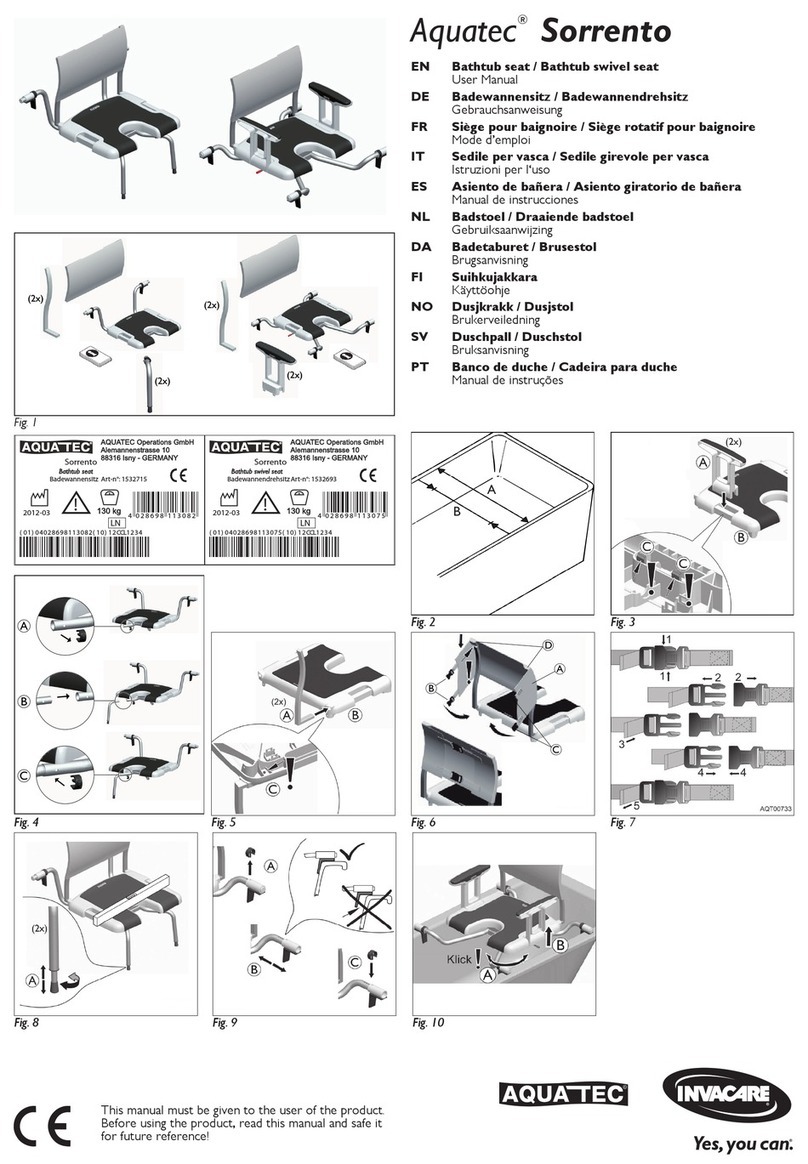
Invacare
Invacare Aquatec Sorrento user manual
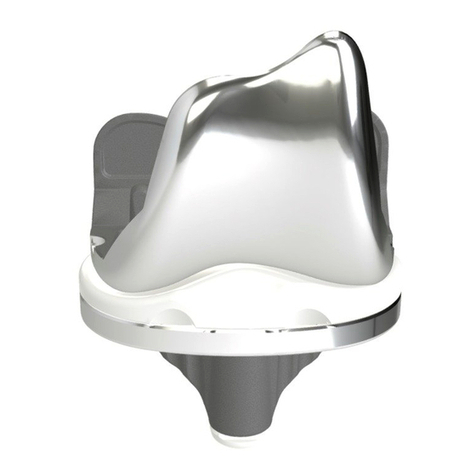
Limacorporate
Limacorporate Physica knee system Instructions for use
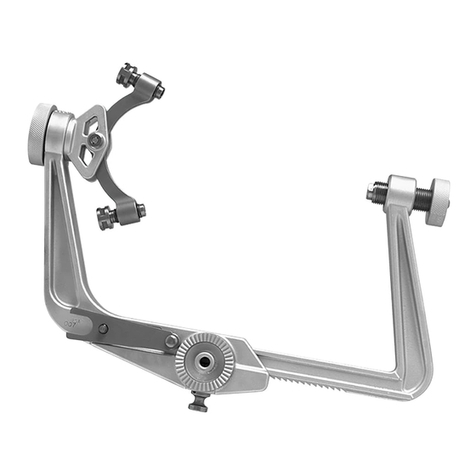
Integra
Integra MAYFIELD instruction manual
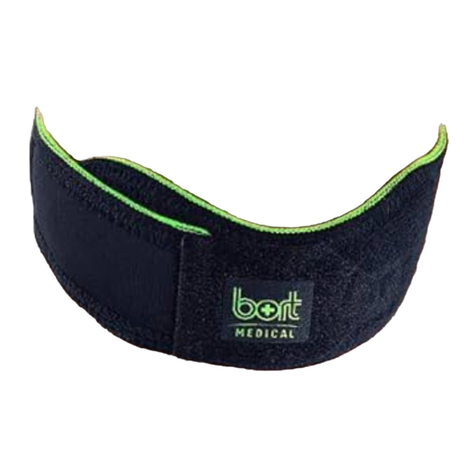
bort medical
bort medical 114 010 manual
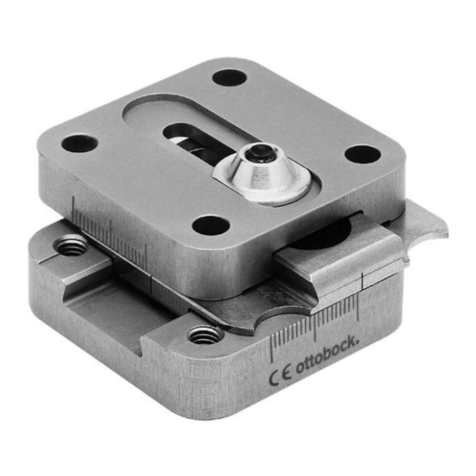
Otto Bock
Otto Bock 4R101 Instructions for use

DeVilbiss
DeVilbiss Vacu-Aide QSU 7314 Series Instruction guide
